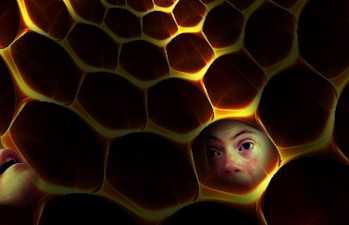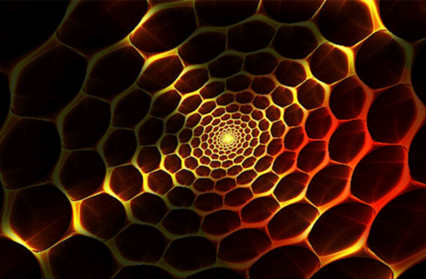Jemma Beggs reviews Larvae by Theatre Ffynnon, a project which explores the stages of human development through artistic research following the life cycle of the butterfly.
Theatre Ffynnon is a Community Arts Theatre dedicated to “supporting the development of a disability arts culture… placing adults and young people with learning disabilities, physical disabilities and mental health issues at the centre of activities, involving them as creators, performers & educators”.
 Larvae is the second phase of Theatr Ffynnon’s project Metamorfza which follows the life cycle of the butterfly – embryo; larva; pupa; imago – whilst exploring the four stages of human development . Metamorfza is part art and part research, as an important aspect of the project is to collect audience and performer’s feedback in order to evaluate how art affects human emotion and to document the impact on the performer’s lives when they leave the art space. It is designed to be a journey, as much for the audience as for the artists.
Larvae is the second phase of Theatr Ffynnon’s project Metamorfza which follows the life cycle of the butterfly – embryo; larva; pupa; imago – whilst exploring the four stages of human development . Metamorfza is part art and part research, as an important aspect of the project is to collect audience and performer’s feedback in order to evaluate how art affects human emotion and to document the impact on the performer’s lives when they leave the art space. It is designed to be a journey, as much for the audience as for the artists.
Larvae’s journey begins with the nine performers stood in a tight group, cocooned in the silent darkness of the studio. A disembodied voice in the dark begins to slowly chant; “Head. Body. Step. Step In. Step Out.” At each word the group moves as one, creating the sense of a single organism. The voice falls silent, music filling the space, as the performers break away from each other, moving slowly, carefully to inhabit their individual spaces.
Their movements are always performed at this steady, calm pace. Combined with the music and darkness of the studio, there is an earthy, slightly eerie atmosphere as we are enveloped in the nest of the larvae. The soundtrack switches to overlapping voices, the muffled words just shy of decipherable, making it reminiscent of the womb. These are the final words of the piece– it is a performance not of thought but of feelings.
There is a sense of loneliness and sorrow which pervades ‘Larvae’. The dancer’s flowing arm and hand movements and quiet peacefulness create a melancholy atmosphere – we are experiencing the physical embodiment of loss and emptiness felt when a person is left behind. The sheets are carefully removed and the performers begin a rhythmic clapping as if as if shedding a skin and cracking from their shells.
With this sense of loss intrinsic to the piece, a beautiful fragility emerges, most noticeably in the solo of one of the dancers, Jane. Stood in an intricately patterned circle of yellow light, she appears bathed in the gentle rays of the sun, performing with a serenity and delicacy which is touching to witness. There were times when Larvae was too internalised at times, the emotions of the piece a little too difficult to feel, but when the performers broke into smiles of pure joy and pride, and even tears at the end, it was obvious just how much this means to them all.
A Q&A session which involved all the performers, directors and creators of Larvae was accompanied by illustrator Rosie Faragher whose live drawings to capture the thoughts and feelings of the evening, were projected onto a screen for the audience. Hearing directly from the performers how much their confidence has been built and how much they love taking part in these shows was a wonderfully personal way to finish a powerful evening of art.













